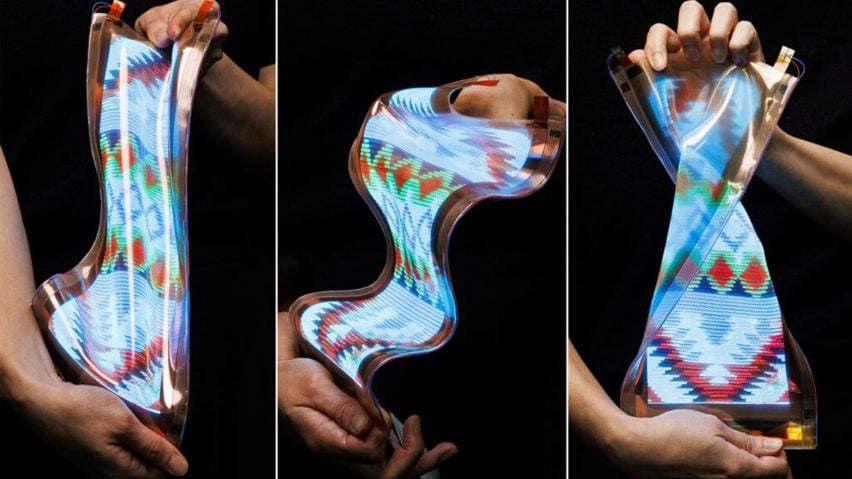After five years of development, LG Display has created a stretchable digital screen capable of expanding up to 50 per cent, which can also be twisted and bent into various shapes.
The stretchable display prototype was presented at LG Science Park in Seoul as part of Final Outcome Showcase for the Stretchable Display National Project, which concluded five years of research and development of the product.
It encompasses a flat, 12-inch mat displaying a rectangular screen with a resolution of 100 pixels per inch, which sits between the standard 72-300 pixels per inch of a computer monitor.
The screen also displays full RGB colour.
This mat can be folded, twisted and stretched without compromising the display.
"The stretchable display is more than just an expandable screen," said the team. "It can be folded, twisted, and reshaped, earning it the title of the 'ultimate free-form display'."
Compared to a previous model released in 2022, this most recent display has an "elongation rate" of 50 per cent, versus 20 and expands from 12 inches to 18.
"The newly introduced stretchable display, developed through extensive collaboration, marks a significant improvement in flexibility compared to the first prototype revealed two years ago," said the team.
"The most notable feature is the enhancement of the elongation rate from 20 per cent to an impressive 50 per cent."
The team achieved the elasticity using materials "typically found in contact lenses" and micro-LEDs, which are capable of delivering high-quality visuals under shock, such as high temperatures.
A new structural design also relieved stress on the display's wiring.
"Moreover, a new structural design was implemented to minimize physical stress on the wiring when the display is stretched, significantly boosting durability," said the team.
"This innovation ensures the display remains intact even when subjected to everyday impacts and pressure, turning once imagined technologies into reality."
This flexibility allows for a variety of uses according to LG Display, as the screen can effectively be used as material to conform to surfaces.
In one instance, it was showcased as part of a car dashboard with a raised central portion that acts as a digital knob and buttons that emerge from the surface, then retreat after use.
Because of its material-like qualities, it could also be used in the fashion industry.
"If we could change the design and color of everyday clothing in real-time, it would bring a new paradigm to the fashion industry," said fashion designers Youn-Hee Park and Chung-Chung Lee.
"Using displays as a fabric material offers revolutionary potential for creating clothes that never become outdated."
Other experiments with digital screens include a Huawei phone that can expand into a tablet and a transparent-screen laptop from Lenovo.
The photography is courtesy of LG

